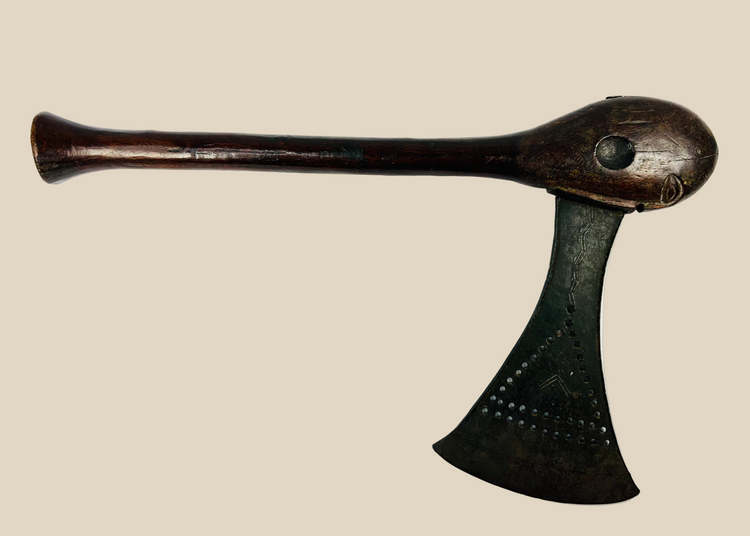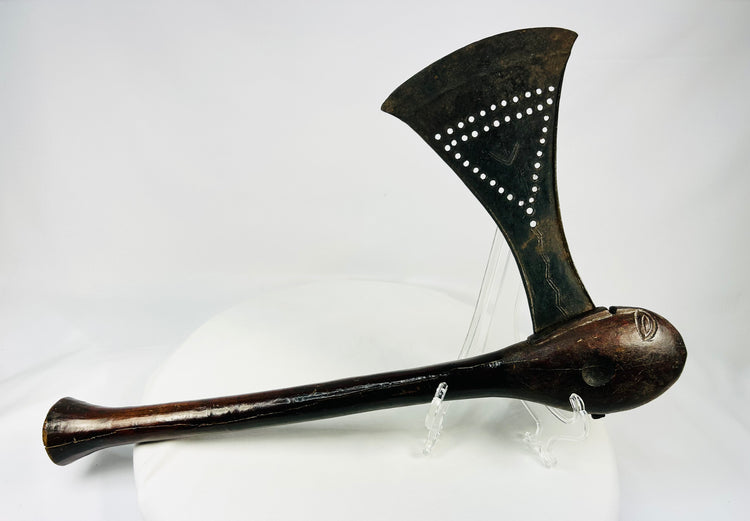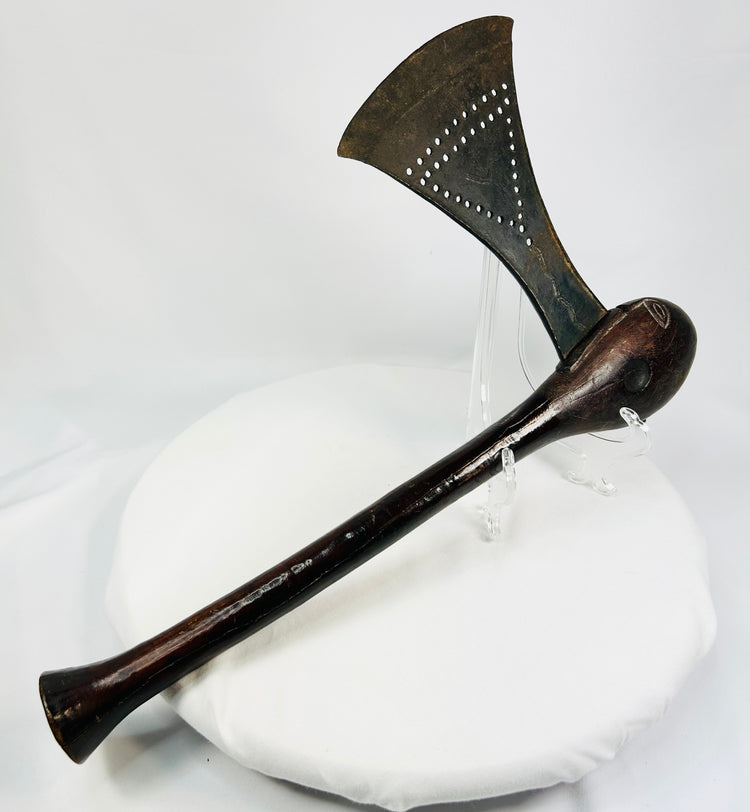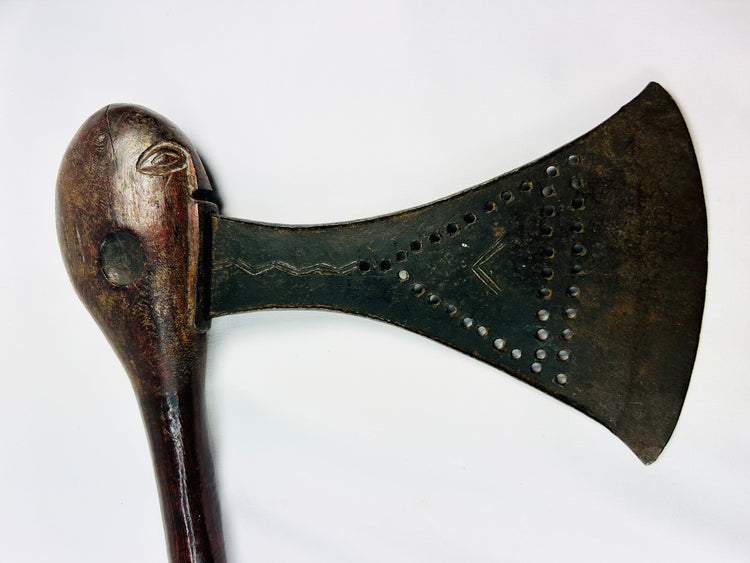African Luba Court Axe | Fan-Shaped Blade with Triangular Punchwork | Late 19th Century
Description
More
Less
Historical Context & Origin
Region: Central Africa, Democratic Republic of Congo (Luba; related traditions among Hemba/Tabwa)
Material: Iron blade with punchwork; carved hardwood haft with rich patina
Period: Late 19th Century
Description
A finely crafted Luba prestige axe featuring a broad, faniform iron blade, richly ornamented with triangular fields of punched dots and incised chevrons along the neck. The blade is seated within a slotted wooden head and secured with an iron pin. The haft swells into a bulbous pommel, carved with an almond-shaped “eye” motif—a symbolic device associated with vigilance, authority, and watchfulness. Prestigious rather than practical, such axes were regalia objects of courtly display, held by chiefs and dignitaries as emblems of command.
Features
- Fan-shaped iron blade with triangular punchwork and incised chevrons
- Hardwood haft swelling to a stylized eye-form pommel
- Traditional slotted mount, secured with iron pin
- Deep patina and surface polish from generations of handling
- Balanced proportions with strong sculptural presence
Cultural Significance
Within Luba culture, prestige axes embodied the authority of rank and the moral power of justice. They were displayed in processions, gifted in alliances, and carried during diplomatic encounters—symbols of leadership rather than combat weapons. Closely related examples are known among the Hemba and Tabwa, testifying to the shared courtly traditions of Central African political culture.
Condition
Very good condition for age. Blade shows stable oxidation, minor edge wear, and light pitting. Haft with expected nicks, handling polish, and small marks; slotted joint remains firm and stable. Overall, an elegant and well-preserved ceremonial piece.
Dimensions (approximate)
Length: 17.5 in
Blade width: 7 5/8 in
Age
Late 19th Century, Luba prestige regalia
Description
Historical Context & Origin
Region: Central Africa, Democratic Republic of Congo (Luba; related traditions among Hemba/Tabwa)
Material: Iron blade with punchwork; carved hardwood haft with rich patina
Period: Late 19th Century
Description
A finely crafted Luba prestige axe featuring a broad, faniform iron blade, richly ornamented with triangular fields of punched dots and incised chevrons along the neck. The blade is seated within a slotted wooden head and secured with an iron pin. The haft swells into a bulbous pommel, carved with an almond-shaped “eye” motif—a symbolic device associated with vigilance, authority, and watchfulness. Prestigious rather than practical, such axes were regalia objects of courtly display, held by chiefs and dignitaries as emblems of command.
Features
- Fan-shaped iron blade with triangular punchwork and incised chevrons
- Hardwood haft swelling to a stylized eye-form pommel
- Traditional slotted mount, secured with iron pin
- Deep patina and surface polish from generations of handling
- Balanced proportions with strong sculptural presence
Cultural Significance
Within Luba culture, prestige axes embodied the authority of rank and the moral power of justice. They were displayed in processions, gifted in alliances, and carried during diplomatic encounters—symbols of leadership rather than combat weapons. Closely related examples are known among the Hemba and Tabwa, testifying to the shared courtly traditions of Central African political culture.
Condition
Very good condition for age. Blade shows stable oxidation, minor edge wear, and light pitting. Haft with expected nicks, handling polish, and small marks; slotted joint remains firm and stable. Overall, an elegant and well-preserved ceremonial piece.
Dimensions (approximate)
Length: 17.5 in
Blade width: 7 5/8 in
Age
Late 19th Century, Luba prestige regalia
You May Also Like























